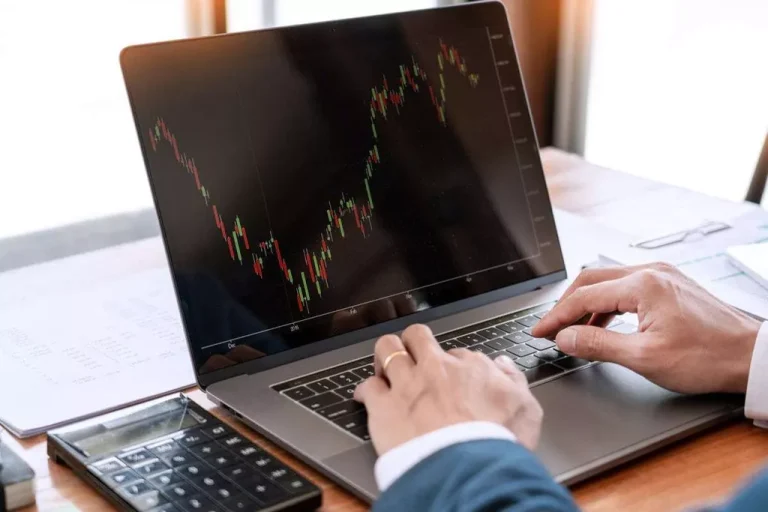How to measure the liquidity of cryptocurrency markets?
In an illiquid market, the lower volume of trades and fewer participants create conditions ripe for manipulation. A single trader or group with significant resources can influence the price of a cryptocurrency by placing large buy or sell orders, causing significant price shifts. This practice, known as “pump and dump,” can lead to artificial price inflation followed by a precipitous fall, which manipulators use to their advantage. However, in a liquid market what is crypto liquidity with higher trading volume and many participants, such manipulative actions have a less dramatic effect on the price, making a cryptocurrency more reliable, transparent, and fair. A crypto liquidity provider (LP) is an individual or entity contributing their crypto assets to a liquidity pool. Liquidity providers play a vital role in decentralized finance (DeFi) platforms by ensuring there’s enough liquidity for traders to buy and sell assets smoothly.
The decline in trading volume can indeed be attributed to a combination of factors. While the ongoing Israel-Hamas conflict hasn’t disrupted oil supplies, concerns remain. Oil analyst Reza Falakshahi has cautioned that further escalation could interfere with critical transport routes like the Strait of Hormuz, through which more than a third of global seaborne oil exports pass daily. Currently, the Federal Reserve’s future course remains uncertain as there have been no indications of a pause in Quantitative Tightening or any plans to cut interest rates. First, centralization goes against the very spirit in which cryptocurrencies were developed.

For example, the most liquid cryptocurrency, Bitcoin, has a market cap of roughly $580 billion; while gold’s is $13 trillion, with a T, about 700% higher. This type of measurement looks at the volatility of an asset’s price over time. If the price of an asset is stable and doesn’t experience large swings, then it is considered to be more liquid than an asset with a volatile price. Price-based liquidity can be used to measure the liquidity of a portfolio of assets. On a centralized exchange, liquidity is achieved by employing market makers and high-frequency traders.

For any investment, one of the most important considerations is the ability to efficiently buy or sell that asset if and when the investor pleases. After all, what is the point of profit if the seller is not able to realize their gains? The liquidity of the asset will largely determine if and how much of a position a prudent investor will take in the investment – and this extends to Bitcoin and other cryptocurrencies.
This upward pressure on treasury yields is exacerbated by the implementation of aggressive interest rate hikes. So on Uniswap, we can make transactions of 40 million, and we will not move the ETH price by more than 2%, while for Binance or Coinbase, it would be possible for an amount less than half. Yarilet Perez is an experienced multimedia journalist and fact-checker with a Master of Science in Journalism. She has worked in multiple cities covering breaking news, politics, education, and more. Xuan Vinh Vo is a Professor at the University of Economics Ho Chi Minh City, Vietnam. He is also the Director of the Institute of Business Research, University of Economics Ho Chi Minh City, Vietnam.

While stablecoins and digital currencies aren’t part of the standard for everyday payments yet, it’s only a matter of time until they are widely accepted. In any case, much of the volume in the cryptocurrency market is already done in stablecoins, making them very liquid. Cash (or cash equivalents) can be considered the most liquid asset since it can be easily converted into other assets. Providing liquidity https://www.xcritical.in/ gives you a reward in the form of trading fees when people use your liquidity pool. Whenever someone trades on PancakeSwap, the trader pays a 0.25% fee, of which 0.17% is added to the Liquidity Pool of the swap pair they traded on. The current ratio (also known as working capital ratio) measures the liquidity of a company and is calculated by dividing its current assets by its current liabilities.
In order to calculate it, the number of released coins is multiplied by the cost of one unit. Such stats are published by Coinmarketcap.com, it is the start of a suitable token selection. You may be surprised, but the more it is, the higher the liquidity of the coin. Our ultimate guide arms you with essential resources, from picking the right broker to mastering market analysis. Designed for traders at all levels, this guide aims to boost your confidence and profitability.
Liquidity is used to describe how easily you can buy or sell a certain asset, without impacting its price. In other words, it shows the buying and selling interest in a market, and how easy it is for transactions to take place. With more liquidity, you can buy or sell larger amounts of crypto without moving the market. At present, the size of the overall cryptocurrency market, including Bitcoin, is still quite small.
We observe a declining trend from the start of the sample period to early 2017, when liquidity connectedness increases and peaks in October 2017. The initial decline in liquidity connectedness can be attributed to the hacking of Bitfinex and British exit from the EU. Contrarily, factors such as Japan declaring BTC as a legal tender on April 1, 2017, led to enhanced liquidity connectedness.
- Distinct liquidity clusters for Ethereum (ETH) and Dash are observed for BTC, LTC, and Ripple (XRP).
- The Kyle and Obizhaeva (2016) estimator and the Amihud (2002) illiquidity ratio outperform when estimating liquidity levels.
- On a centralized exchange, liquidity is achieved by employing market makers and high-frequency traders.
- The graph below illustrates the impact of quantitative tightening by the Federal Reserve and European Central Bank in 2023.
- This makes liquidity crucial for trading – as you need to be able to get in and out of positions at a moment’s notice, without spending a fortune on fees.
In this blog post, we’ll delve into the various types of stop-losses, how they work, and how you can use them to protect your trades. Discover how AI powers price predictions and meet the crew steering the future of crypto trading. They are typically managed by decentralized autonomous organizations (DAOs) and typically incentivize market makers and grant them a reward for providing liquidity to the market. Muhammad Arif is currently serving as an Assistant Professor of Accounting and Finance at Department of Business Administration, Shaheed Benazir Bhutto University, Shaheed Benazirabad. His areas of research interest include sustainability disclosures, applied financial econometrics, technical analysis, fintech and corporate finance. Liquidity in cryptocurrency makes it less susceptible to manipulations of the market by dishonest actors or groups of actors.
They can swiftly convert their holdings into cash or other assets, providing the freedom to respond to changing investment opportunities or unforeseen financial needs. A liquid market is considered more steady and less volatile as a thriving market with considerable trading activity can bring buy and sell market forces into harmony. While some argue that bitcoin may eventually function as a store of value similar to gold, it has yet to establish itself as a universally accepted safe-haven asset class. Increasing institutional adoption for cryptocurrencies globally has led to bitcoin speculation outweighing mainstream usage as a store of value.
A liquid cryptocurrency means there’s always someone willing to buy it when you want to sell it, and vice versa. Consequently, you can buy or sell the desired quantity of any digital asset, take profit, or cut losses without dramatically shifting the market. Liquidity pools are generally considered to be safe, as they are managed by smart contracts that are designed to ensure the security of the assets in the pool. Additionally, liquidity pools are decentralized, meaning that there is no central authority that can be hacked or manipulated.
However, a large portion of this connectedness is attributed to short-run connectedness, which indicates the contagion effect. This observation of the contagion effect in the cryptocurrency market has also been reported in the volatility connectedness in cryptocurrency markets (Yi et al. 2018). In post-2017, the liquidity connectedness shows a gradual upward trend, with the connectedness index approaching 80% in early 2019. Such higher liquidity connectedness in the cryptocurrency market is attributable to developments such as introducing real-time settlement systems and cryptocurrency trading pairs, that is, XRP/BTC. These developments have significantly reduced the settlement time for transactions and enhanced the exchange of value across borders.
